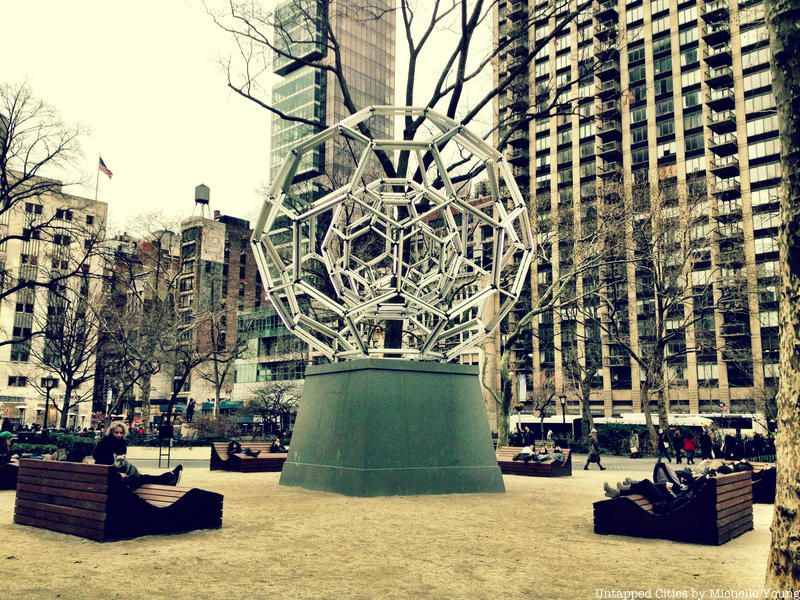Last Chance to Catch NYC's Holiday Notalgia Train
We met the voices of the NYC subway on our nostalgia ride this weekend!


From historic labor union protests to ones about vital economic and political issues like human rights, climate change and the wealth gap, New York City has seen many serious protests that have incited large-scale change. Protesters have gathered in famous rallying sites like Union Square and Times Square to passionately fight for their liberties and beliefs and foster permanent change. But there has been at least one striking exception to these serious, life-changing rallies: a 1901 protest in Madison Square Park over rocking chairs.
Before we go into the causes of these protests, here’s some background info. The Mall in Central Park, an elm-lined path stretching from 66th to 72nd street, was the only formally planned area of Central Park and was especially built to attract visitors. At first, upper-class people would use it as a social site, but soon streetcars made Central Park more accessible at the turn of the century, bringing more lower-class citizens into The Mall and other places around New York City.
This increase in lower class citizens in Central Park gave English businessman Oscar F. Spate an idea: bring fancy rocking chairs into the park and charge people three to five cents to sit in them. He figured he would make money because wealthier people would want to pay for better seating than the poorer park goers around them. Spate also wanted to discourage homeless residency in the park.
Thus, Spate convinced the Parks Commissioner, George Clausen, to let him pay the city $500 annually to place 200 cushioned rocking chairs in Madison Square Park, Union Square and Central Park, and then charge people to use them. He got the idea from London and Paris, whose parks sometimes followed this practice of charging pedestrians for seating.
There would be would be chair attendants dressed in gray making $1 per day, who would approach people who tried to sit down and ask them to pay. Spate’s endeavor wasn’t too successful: one attendant reported that about one in fifty people actually who sat on the chairs actually stayed and paid.

Even more unique seating in Madison Square Park, as part of an art installation
Spate’s rocking chairs even replaced some of the free benches in shady locations. Thus, when a July heat wave occurred, the pedestrians of Madison Square Park refused to pay to sit in the shade and even deliberately went there to sit in the fancy green rocking chairs without paying (or pay to use the chairs and then smash them). Though the heat of the July protests occurred in Madison Square Park, people also protested in Central Park with signs.
How did Spate respond to these initial protests? He remained adamant and merely told chair attendants to stack the chairs and only give them out once people paid their fees.
The police even became involved when one-thousand men and boys chased a chair attendant, Thomas Tulley, from the park and into the former Fifth Avenue Hotel, crying “Lynch him!” Tulley had forcibly removed someone who hadn’t paid from a rocking chair and slapped a boy who “was heckling him.”
With these riots lasting several days, that same month the Parks Commissioner canceled the five-year contract with Spate, and a celebration with 10,000 people and fireworks ensued. A determined Spate took the Parks Commissioner to court for ending the contract, but the judge didn’t allow the public to pay for seating. According to Strange Company, “The tumult lasted until July 11, when Max Radt, a vice-president of the Jefferson State Bank, got the state Supreme Court to issue an injunction forbidding anyone from charging money for park seating.”
Another fun fact: Spate then sold the chairs to Wanamaker’s Department Store, where they were then advertised as “Historic Chairs. ”Other chairs were reportedly purchased by Clausen himself, placed back in the parks and labeled FREE. Spate himself has an even more colorful history than just the rocking chair episode. Eight years before this incident, in 1893, he had filed from divorce from his wife claiming she was actually a man. Later, he would go to jail for attempting to swindle wealthy people from Pittsburgh, and it would be revealed that his real name was in fact Reginald Seymour. And not only that, while in jail, he became a millionaire due to the death of his mother in London. He would come to an ignominious end, committing suicide in Detroit in 1911 while being investigated by the government.
Fortunately, today tired New Yorkers can enjoy the great liberty of sitting in benches for free in New York City parks.
Next, read about 10 Unique Benches in NYC, The Top 12 Secrets of NYC’s Madison Square, and The Top 10 Secrets of NYC’s Central Park. Get in touch with the author @sgeier97.
Subscribe to our newsletter